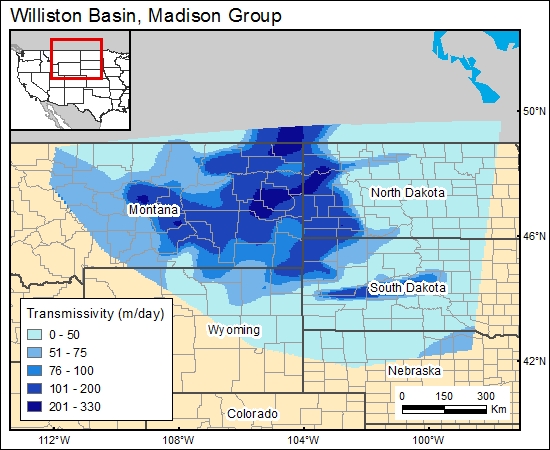Madison Group, Williston Basin (02)
Comments on Geologic Parameters
02 Permeability/Hydraulic Conductivity:
The development of karst, sink holes, caves, and solution breccias is common in the Madison Group, modifying the permeability. Movement along major faults and lineaments may have affected permeability over a large area and through time. Madison permeability is secondary to fracture permeability (Downey, 1984, 1986). Flow-net analysis assumes that a steady-state flow condition exists and no leakage is occurring from or to adjacent aquifers. The transmissivity is about 0,013 ft2/s (Konikow in Downey, 1984, 1986). Other studies suggest that some leakage from overlying rocks may be present and that the transmissivity value should be less than 0,013 ft2/s. According to Downey (1984, 1986), the variation in transmissivity values reported by several scientists is the result of local conditions and may not reflect the average on a regional scale. As a result of his analysis, Downey found that transmissivity values are related to porosity (fracturing porosity). A simulated transmissivity map by Downey (1986) was therefore added to the GIS data base.
02 Map:

02 Reference:
Downey, J. S., 1986, Geohydrology of bedrock aquifers in the northern Great Plains in parts of Montana, North Dakota, South Dakota and Wyoming: U.S. Geological Survey Professional Paper 1402-E, 87 p.
Downey, J. S., 1984, Geohydrology of the Madison and associated aquifers in parts of Montana, North Dakota, South Dakota and Wyoming: U.S. Geological Survey Professional Paper 1273-G, 47 p.



